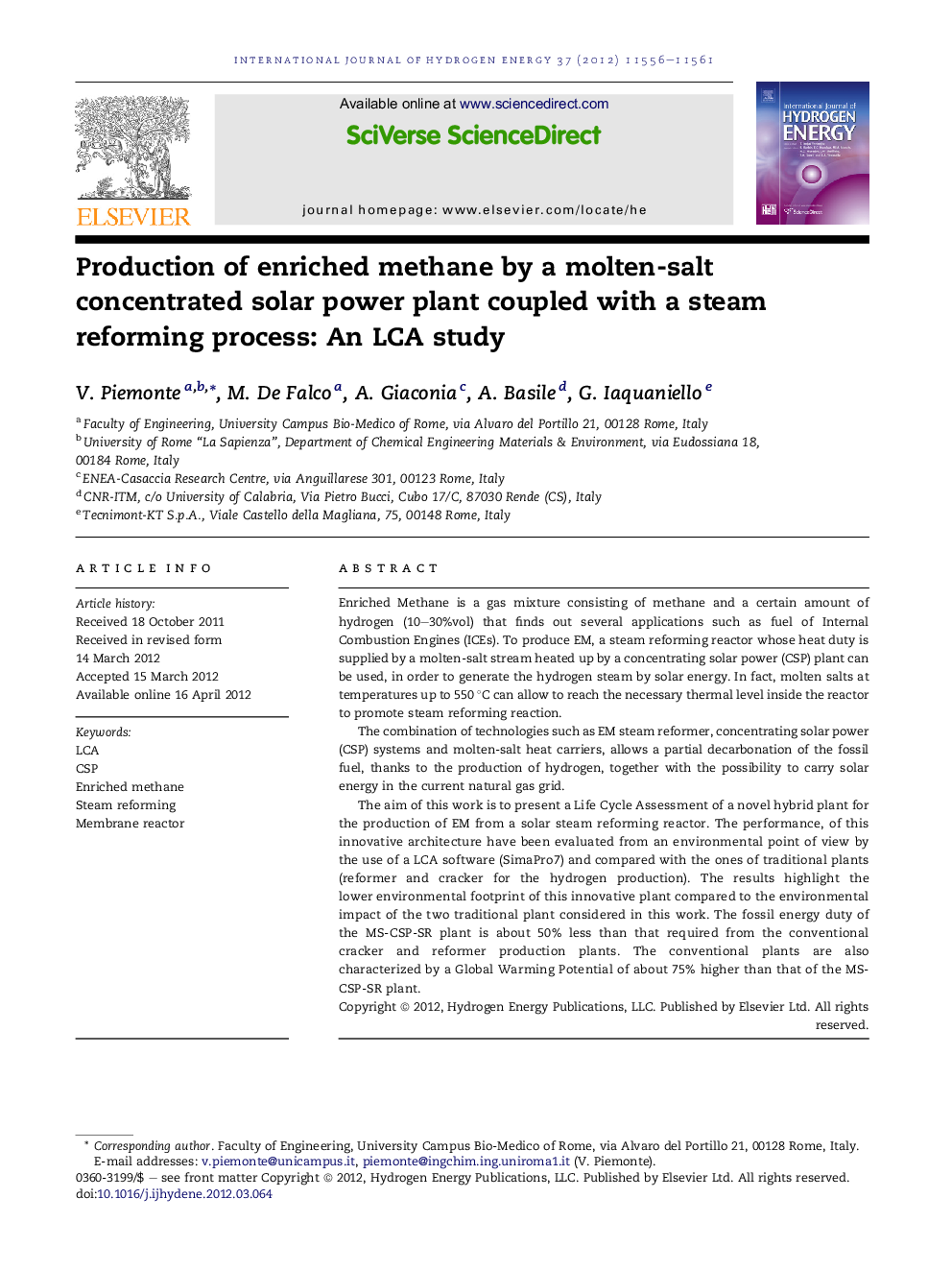| Article ID | Journal | Published Year | Pages | File Type |
|---|---|---|---|---|
| 1276320 | International Journal of Hydrogen Energy | 2012 | 6 Pages |
Enriched Methane is a gas mixture consisting of methane and a certain amount of hydrogen (10–30%vol) that finds out several applications such as fuel of Internal Combustion Engines (ICEs). To produce EM, a steam reforming reactor whose heat duty is supplied by a molten-salt stream heated up by a concentrating solar power (CSP) plant can be used, in order to generate the hydrogen steam by solar energy. In fact, molten salts at temperatures up to 550 °C can allow to reach the necessary thermal level inside the reactor to promote steam reforming reaction.The combination of technologies such as EM steam reformer, concentrating solar power (CSP) systems and molten-salt heat carriers, allows a partial decarbonation of the fossil fuel, thanks to the production of hydrogen, together with the possibility to carry solar energy in the current natural gas grid.The aim of this work is to present a Life Cycle Assessment of a novel hybrid plant for the production of EM from a solar steam reforming reactor. The performance, of this innovative architecture have been evaluated from an environmental point of view by the use of a LCA software (SimaPro7) and compared with the ones of traditional plants (reformer and cracker for the hydrogen production). The results highlight the lower environmental footprint of this innovative plant compared to the environmental impact of the two traditional plant considered in this work. The fossil energy duty of the MS-CSP-SR plant is about 50% less than that required from the conventional cracker and reformer production plants. The conventional plants are also characterized by a Global Warming Potential of about 75% higher than that of the MS-CSP-SR plant.
► The novel plant presented is “environmentally” preferable in comparison to conventional plants. ► Conventional plants show a Global Warming Potential about 75% higher than hybrid plants. ► The hybrid plant requires a fossil energy duty about 50% less than conventional plants.
